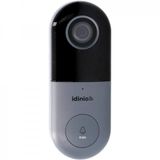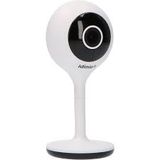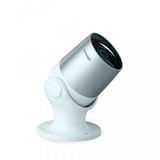Shada Alarm and security systems





shada alarm and security systems for small and mid-size sites
Shada covers the core layers of intrusion and life-safety for apartments, offices, retail back-of-house, and light industrial. The lineup spans detectors, sounders, control gear, and accessories that install cleanly with standard wiring practices. Engineers get predictable form factors, clear terminal markings, and housings that sit well with modern interiors. Installers tend to notice the small touches: captive screws, deep cable bays, and lids that re-seal without fighting the gasket.
shada home security systems portfolio and topology
Expect a modular approach. A compact head unit handles power, I/O, and communication; zones scale with add-on input expanders. Typical topologies are star or hybrid star/ring with home-run cabling for critical loops and short local branches for room devices. Wired lines serve always-on peripherals and high-security areas, while a radio layer covers finished spaces where opening walls isn’t feasible. Remote keypads or small HMI panels allow arming by area and give per-zone diagnostics to speed maintenance.
Technical specifications and design notes
Detectors and modules are sized for quick termination inside 60–85 mm back boxes or on DIN where that’s the site standard. Plastics are UL94-V0 or halogen-free options for occupied spaces; outdoor variants use UV-stabilized housings. Typical environmental limits: −10…+50 °C, 0–95 % RH non-condensing. Ingress protection lands around IP20 indoors, with IP44 corridor units and IP65 weatherproof elements for plant rooms and entrances. Power budgets assume 12 V DC rails (9–16 V tolerance) with quiescent currents in the 8–25 mA band per device; larger sounders are specified separately given their surge draw. Where required, select versions supporting bus protocols with addressing and tamper reporting, or dry-contact NO/NC outputs when integrating to third-party panels.
shada safety control units interfaces and supply
Control units present supervised zone inputs, programmable relays, and transistor outputs for strobes or pre-alarm beacons. Look for 2 kV surge protection on I/O, reverse-polarity and over-current safeguards, and battery management for 12 V standby packs. Mains sections use high-efficiency PSUs to keep enclosure temperatures reasonable; allow clearance for 7–12 Ah batteries when planning cabinet sizes. For BMS links, specify models with Modbus RTU/TCP or simple dry-contact summaries (armed, alarm, fault).
Applications and compatibility across buildings
Apartments and hotels benefit from quiet housings and low-profile indicators; offices lean on zoning to separate open-plan areas from meeting rooms; retail back-of-house prefers vandal-resistant grilles on sounders; plant corridors want gasketed enclosures and stainless fixings. Most Shada modules interoperate over relay logic with third-party controllers, so they can sit behind existing access control or fire annunciation where local codes allow. For SELV segregation, use partitioned trunking and keep detector lines off mains conductors to reduce induced noise.
shada motion sensors placement and tuning
Presence and intrusion detection come in PIR, dual-tech PIR/microwave, and high-mount corridor optics. Expect 90–120° fields, 10–18 m reach at 2.2–2.4 m mounting height, with look-down zones to catch approach along the wall. Dual-tech units ride out HVAC drafts and light thermal swings; microwave elements commonly operate at 5.8 GHz with adjustable sensitivity. Practical tips: align the sensor perpendicular to walk paths for best crossing motion, set pulse counts to avoid nuisance trips, and use pet-friendly lenses where animals up to ~20–25 kg are expected.
shada smoke detectors detection methods
Optical (photoelectric) heads address smoldering loads in bedrooms and corridors; fixed-temperature or rate-of-rise heat sensors fit kitchens and boiler rooms. Detectors ship with twist-lock bases, remote test inputs, and local sounders on residential variants. Engineering values worth noting: alarm obscuration typically around 0.1–0.3 dB/m for photoelectric types, response thresholds ~58–70 °C for fixed-heat heads. For maintenance, plan access with clear lids or remote indicators in high ceilings and use dust caps during construction to avoid false alarms later.
Integration with other Shada products
Tie the electronics to Shada’s installation hardware to keep the fit-out tidy and serviceable. Use IP-rated junction boxes with raised bosses for terminal strips, compression glands sized to cable OD, and mini-trunking with divider strips when power and signal run together. Ceiling sensors sit neatly on spacer rings where plaster is uneven; pre-terminated pigtails reduce time on lifts. For exposed ceilings or workshops, galvanized trunking and steel conduit protect detector drops and sounder feeds from knocks.
shada sirens and alarms signaling and power
Sounders and strobes cover 100–115 dB(A) at 1 m with multi-tone options in the 800–3 kHz band. Wall units often combine LED strobes for high-lux spaces; ceiling units favor wide uniform coverage. Plan cable sizes for peak draw during start-up and synchronized pulses, not just quiescent current. Outdoors, specify IP65 housings with drain channels and conformal-coated boards; in stair cores, consider lower-frequency tones that carry through closed doors without being harsh.
Selection criteria for B2B clients
Start with risk zoning, then map device density to coverage diagrams rather than room counts. Pick dual-tech motion units in HVAC-heavy spaces, optical smoke in sleeping areas, and heat in kitchens. Choose supervised inputs for critical loops and simple relay versions when tying to legacy panels. Confirm tamper switches where devices are accessible to the public. Size PSU and battery for at least 24 hours standby plus full-alarm load; leave 30 % margin for later adds. Where fit-out is compressed, factory-crimped leads and labeled ferrules save real time across dozens of rooms. Note that shada wireless alarm devices can bridge late scope changes without reopening finished walls; check advertised battery life, supervision interval, and RF band compliance before approving the submittal.
Product range and series overview
Within a typical project the mix is predictable: compact controllers with 4–16 on-board zones, input and output expanders, interior PIR/dual-tech detectors, corridor optics, recessed and wall sounders, door/window reeds, flood probes for wet areas, keypads, and small HMIs. Accessories include test magnets, tamper covers, corner and swivel brackets, and EMC clamps where braided screens need 360° termination. Most installers standardize on two lens patterns and one outdoor enclosure to keep van stock lean while still meeting coverage.
Advantages of working with Bankoflamps
We tailor pricing to your room lists and show live EU stock before your crew is scheduled. Quotes usually return in about an hour with EAN/MPN so variants don’t drift between phases. Your portal exposes lead times, order status, and downloadable price files; we keep price-validity windows stable so approvals don’t expire mid-tender. Approved clients can use post-payment up to 30 days. We consolidate partials to cut freight, and your account manager cross-checks devices against drawings — detectors, siren load, PSU margin, enclosure IP, bracket types, and gland threads — so boxes land site-ready instead of prompting returns.